- Home
- Alison Weir
Mary, Queen of Scots, and the Murder of Lord Darnley Page 28
Mary, Queen of Scots, and the Murder of Lord Darnley Read online
Page 28
Darnley sent several messages asking Mary to visit him,24but Buchanan says she “daily pretended to be on the point of going to Glasgow, while she awaited news of the King’s death.” Lennox claims that it was Mary who offered to visit Darnley, but that he replied insultingly, “if she come, it shall be to my comfort and she shall be welcome, but this much you shall declare unto her, that I wish Stirling to be Jedburgh, Glasgow to be the Hermitage, and I the Earl of Bothwell, as I lie here, and then I doubt not that she would be quickly with me, undesired.”25It should be remembered that Lennox wrote this in 1568 with the intention of proving Mary guilty of Darnley’s death, and that his Narrative is full of proven errors: this speech sounds very much as if it was invented with the benefit of hindsight.
Ostensibly, Mary did not visit Darnley because she was “very ill, having been injured by a fall from her horse at Seton.”26This may have been a diplomatic excuse—there is no other record of this fall—for Mary cannot have relished the prospect of seeing Darnley, especially in view of the latest rumours accusing him of treasonable practices and the fact that, to visit him, she would have to go deep into Lennox territory, where she would be vulnerable to attempts to kidnap or kill her. There is evidence in Casket Letter II that she and Darnley were corresponding at this time, but the inference is that these letters were acrimonious.27Mary had no reason to believe that a meeting with Darnley would not be too.
That Mary took seriously the rumours that Darnley was plotting to seize young James is evident from her decision to remove her son from Stirling, which was too close to Lennox territory for her peace of mind, and keep him with her in Edinburgh. Another consideration was that, while Mar himself might be loyal, his Countess was of the Lennox affinity, being the sister of Tullibardine. On 10 January, presumably recovered from her fall, Mary set out, having announced, according to Buchanan, that she was moving the Prince to Edinburgh because Stirling Castle was “damp and cold.” The Book of Articles goes so far as to suggest that Mary thought she could not sufficiently persuade her lover Bothwell of her favour “without she delivered her son also into his hands as a pledge thereof.” Yet Bothwell had been away from court since 2 January, and would not return for at least another week; even then he would absent himself again for a time, and there is no evidence that James was delivered into his hands; even if he had been, Bothwell, with his record of staunch loyalty to the Crown, was the ideal choice of guardian, and Mary could have relied on him more than any other to keep her child safe.
On the day the Queen left for Stirling, Morton returned to Scotland, crossing the border at Berwick. From here, he wrote to Cecil, thanking him for his support.28The next day, Morton travelled via Wedderburn to Whittinghame Castle in East Lothian, the seat of his cousin, William Douglas. News of his arrival soon reached Bothwell in Dunbar, but it was a week before the Earl rode to Whittinghame, having in the meantime suffered a serious haemorrhage from one of his wounds.29
It was probably on Saturday, 11 January that Mary wrote the first of the notorious documents known as the Casket Letters. These letters will be discussed in full later, but the likelihood is that they were genuine letters of Mary’s that were later doctored by her enemies in order to prove her guilty, not only of an adulterous relationship with Bothwell, but also of the murder of Darnley. Casket Letter I was almost certainly written to Bothwell, and its text is as follows:30
It seemeth that with your absence forgetfulness is joined, considering that at your departure you promised to send me news from you; nevertheless, I can learn none. And yet did I yesterday look for that [which] shall make me merrier than I shall be. I think you do the like for your return, prolonging it more than you have promised. As for me, if I hear no other matter of you, according to my commission, I bring the man [on] Monday to Craigmillar, where he shall be upon Wednesday; and I to go to Edinburgh to be let blood, if I have no word to the contrary.
He is the merriest that ever you saw, and doth remember unto me all that he can to make me believe that he loveth me. To conclude, you would say that he maketh love to me, wherein I take so much pleasure that I never come in there but my pain of my side doth take me: I have it sore today. If Paris doth bring back unto me that for which I have sent, it should much amend me.
I pray you send me word from you at large, and what I shall do if you be not returned when I shall be there; for, if you be not wise, I see assuredly all the whole burden fallen upon my shoulders. Provide for me, and consider well.
First of all, I send this present to Lethington to be delivered to you by Beaton, who goeth to one day of law of Lord Balfour.31I will say no more unto you, but that I pray God send me good news of your voyage.
From Glasgow, this Saturday morning.
This letter is endorsed, in the hand of Cecil’s clerk, “Proves her disdain against her husband.” Yet it is unlikely that it refers to Darnley at all—it is far too affectionate, and at variance with the attitude expressed in the much more incriminating Casket Letter II—but to Prince James, who is referred to as “the man,” a term of endearment that appears to have been used for children within the Guise family;32in other letters, Mary always refers to Darnley as “the King.” Nor is this in any sense a love letter, but a complaint that Bothwell had not kept Mary informed of his dealings with Morton, about which she was naturally concerned, for much depended upon Morton’s disposition towards both herself and Darnley. With the English succession almost in her grasp, as she believed, she would have wanted nothing to happen that might prejudice her prospects.
The absence of a salutation suggests that Casket Letter I was in fact a postscript to an official letter: Mary was often in the habit of adding such postscripts in her own hand, sometimes without a greeting or signature. This letter bears no signature—none of the Casket Letters does—but is subscribed “From Glasgow, this Saturday morning.” This is probably a forged addition, as will be seen. The name of Maitland does not appear in the Scots translation, presumably to avoid incriminating him.
Nicholas Hubert, also known as “French” Paris or “Joachim,” was a Frenchman who had once been in Bothwell’s service, and later alleged that, for more than six years, he had been bullied, kicked and beaten by his master, although he may have deliberately blackened Bothwell’s character, or been induced to under the threat of torture, in order to save his own skin. Paris had also worked for Lord Seton, and was now employed as a valet de chambre by the Queen,33who sometimes used him as a messenger between herself and Bothwell. Buchanan claims that Paris was “in special trust” with them “touching their secret affairs.” It appears that he was more in Bothwell’s confidence than Mary’s.
In Casket Letter I, Mary instructed Paris to deliver her letter to Maitland, who would give it to either Archibald Beaton (a member of her household who was still in Mary’s service in 1568) or John Beaton, Master of the Queen’s Household, to take to Bothwell, leaving Paris free to pick up some medicine for Mary in Edinburgh and return to her with it as soon as possible.
On 12 or 13 January, Mary left Stirling with James, spending the night as the guest of Lord Livingston at his fourteenth-century tower house at Callendar, near Falkirk, on the way.34She did not, after all, stop at Craigmillar, but travelled on with the Prince to Holyrood Palace, arriving on 13 or 14 January.35 On her return, according to Buchanan, “she learned that the King was recovering. Once again, she proceeded to plan his death, and even admitted some noblemen to knowledge of her criminal intent. Some believed this offered a good opportunity for the Queen to summon him and, if he refused to come, openly to put him to death. There were some ready to do the deed. Others recommended that the crime should be committed secretly. All agreed that it should be done in haste before he had fully recovered.” Other, more contemporary, evidence, shows that, rather than plotting Darnley’s murder, Mary refused to become embroiled in plots against him, as will be seen. Had she really wished to encompass his death, she would have leapt at the chance of others doing the deed for her and taking the
blame. In fact, some evidence suggests that, now that his health was improving, it was Darnley who was plotting murder.
On 14 January, on his return from Stirling, Joseph Rizzio received a shock. A member of the royal household called Timothy asked where Lutini’s horses and clothes were. Rizzio told him that Lutini’s clothes were in his box, but Lutini’s servant, Lorenzo Cagnoli, had already informed Timothy that his master had taken everything with him, including his horses, and had told him, “I have properly tricked the Secretary [Rizzio], because he thinks that my clothes are in my box, but there is nothing there.” Timothy, who had also lent Lutini money, now angrily turned on Rizzio, saying, “Thus have you tricked me, Mr. Secretary. The Queen shall do me right in this matter.” He sought out Sebastien Pagez and made him tell Mary that Rizzio had assured him Lutini had gone to France on her affairs, and that he had lent Rizzio money, “and everyone began to say that there was some knavery afoot,” that Rizzio knew of it, and that Lutini had rifled through the Queen’s papers. Not wishing to be charged with forgery, Rizzio told Mary that Lutini had taken money from him and had promised to leave him his horses as security. Mary had presumably noticed that some of her bracelets were missing and asked where they were. Rizzio replied that Lutini had taken them with him and that they were in his purse with Rizzio’s money. Pagez chimed in that Lutini owed him money also, at which Mary commanded Maitland to write in her name to Berwick, asking Sir William Drury to arrest Lutini and send him back to Edinburgh to face a charge of theft, for “he has lately left his charge” and “fraudulently taken with him the goods and money of divers of his friends and companions.”36But Drury was away from Berwick just then.
This was certainly no straightforward case of theft, for it was soon to emerge that Rizzio had been acting in concert with Lutini and had lied to Mary and his friends; moreover, Lutini had the temerity to remain in Berwick, where he was almost certainly awaiting the arrival of Moretta, who, incidentally, did not reach London until about 18 January. Other evidence, which will be discussed in the next chapter, suggests that Lutini and Rizzio were working secretly for Darnley and that Lutini had been instructed to liaise with Moretta and, through him, with the King’s allies abroad; it appears that, in lying about Lutini, Rizzio was protecting not only Darnley, but his own skin, for forgery was a capital offence.
Maitland had remained with the court since his marriage; he had been at Stirling until 14 January, and was in Edinburgh on the 17th, but soon afterwards left for Lethington. This, as will be seen, was not purely to honeymoon with his bride, for on 18 or 19 January37he rode to Whittinghame and met up with Bothwell, Morton and Morton’s cousin, Archibald Douglas, a Lord of Session and brother of the Laird of Whittinghame. Douglas, who was a minister of the Kirk but had few virtues to qualify him for this calling, was married to Bothwell’s sister, Jean Hepburn. In his time, he would become involved in treason, murder, espionage and forgery.
Bothwell’s account of the meeting is succinct and deals only with the official reason for his visit; he says that Morton and Douglas “promised to forget all that was passed by, and, by the good offices of friends, to satisfy those whom they had formerly offended and bore hatred to.”38
Morton, however, later claimed that Bothwell, “after long communing, proposed to me the purpose of the King’s murder, seeing it was the Queen’s mind that the King should be taken away. My answer was that I would not in any ways meddle in that matter.” He had just been pardoned for one murder and did not wish to become involved in another. “After this, Mr. Archibald Douglas entered into conference with me for that purpose, persuading me to agree to the Earl of Bothwell. Bothwell earnestly proposed the same matter to me again, persuading me thereunto because it was the Queen’s mind and she would have it done,” whereupon Morton asked him to produce her warrant for the King’s assassination. He also sent Archibald Douglas back with Bothwell and Maitland to Edinburgh to sound them out further on the matter, but they proved evasive. Morton later declared that, if the Queen had granted his pardon on condition that he murder Darnley, he would have rejected it out of hand and gone back into exile rather than agree to commit such a foul crime.
Many years later, in 1583, Archibald Douglas wrote his version of events to Mary,39stating that Bothwell and Maitland had indeed met Morton at Whittinghame, but “what speech passed between them, as God shall be my judge, I knew nothing at that time, but at their departure I was requested by Morton to accompany them to Edinburgh and to return with such answer as they should obtain of Your Majesty.” He added, It is known to all men, as well by letters passed between [Morton] and [Maitland] when they became in diverse factions, as also a book set forth by the ministers, wherein they affirm that Morton has confessed to them, before his death, that Bothwell came to Whittinghame to propose the calling away of the King your husband, to the which proposition Morton affirms that he could give no answer until such time as he might know Your Majesty’s mind therein, which he never received.
It is unlikely, given what happened at Kirk o’Field, that Douglas was telling Mary the whole truth. He was, after all, trying to save his neck at the time. Furthermore, in 1581, Morton “confessed his cousin, Archibald Douglas, came to him with a plan for the murder, to which he neither lent approval or help.”40It would appear, therefore, that Archibald Douglas had already offered Bothwell his support and that he came to Whittinghame for the specific purpose of persuading Morton to do the same.
There are some grounds for believing that Bothwell produced the Craigmillar Bond at Whittinghame and that Morton and Douglas willingly signed it. It has been claimed that they had a strong motive, besides revenge, for doing so, for in December, Mary would be twenty-five, the age at which Scottish monarchs legally came of age; any grants made by her or in her name during her minority could be revoked at that time. Morton and his kinsfolk had received generous gifts of Crown lands from the Queen over the years, but Darnley was known to disapprove of this, and they feared that his influence would prevail. Yet at this time, Darnley exerted virtually no influence at all over Mary, nor did it look as if he ever would again. In 1581, Morton finally admitted that he had known in advance of the plot to murder Darnley, but that he had refused to become actively involved in it, which was almost certainly the truth; even so, at the time, he lifted no finger to warn his kinsman. This was the vengeance he doubtless felt that Darnley deserved. If others were prepared to exact it for him, there was no reason for him to get blood on his hands.
Darnley’s murder was almost certainly discussed at Whittinghame, whoever introduced the subject, although it was not until 1581 that the meeting became public knowledge. Maitland’s presence there is proof that he was a part of the conspiracy; he had, after all, initiated it with Moray at Craigmillar.
Bothwell was now a key figure in the plot against Darnley. It is likely that he already had a strong motive for wanting him dead, for, having had time to ponder the consequences of the King’s murder, he had almost certainly resolved to marry Mary himself once she was free, and rule Scotland with her, which would explain why he was pursuing his plans so vigorously. According to Melville, he was already “ruling all at court” and had become very friendly with Morton. Bothwell was therefore in a strong enough position to bend men to his will. The evidence, hostile though it is, suggests that he was enlisting support for the plot on the pretext that the Queen had given her approval; whether she had in fact done so is another matter. If they thought she had not, men might not have been so ready to do her such a service.
In his memoir of 1568, however, Bothwell paints himself as an innocent and others as the villains. He says that, after he had helped to obtain a pardon for the exiles, “I thought about retiring to a peaceful life, after the imprisonment and exile I had suffered, and having no more to do with vengeance and strife.” He claims that those who had benefited from the pardon “made themselves so obedient and appeared so kindly disposed to everyone that all the nobles and gentlemen of the kingdom were delighted, ima
gining all quarrels at court to be at an end. But despite this, the conspirators never lost sight of their wicked plans, and plotted night and day for the death of the King.” It was more than his life was worth at the time he wrote this to reveal that he had been plotting with them.
Something of what had taken place at the Craigmillar Conference was now known in London. On 18 January 1567, de Silva reported: “The displeasure of the Queen of Scotland with her husband is carried so far that she was approached by some who wanted to induce her to allow a plot to be formed against him, but she refused. But she nevertheless shows him no affection. They ought to come to terms for, if they do not look out for themselves, they are in a bad way.”41This report corroborates other evidence that Mary was aware of a plot against Darnley. It has been conjectured that Moretta, who arrived in London around the date on which this report was written, was de Silva’s informant.
It was probably on 19 or 20 January that Bothwell, Maitland and Archibald Douglas arrived at Holyrood, where Bothwell and Maitland sought Mary’s sanction and safeguard for the Bond against Darnley. But, without hesitation, she refused, commanding them to instruct Douglas to “show to the Earl of Morton that the Queen will have no speech of the matter.” Douglas “craved that the answer might be more sensible,” but Maitland said that Morton “would sufficiently understand it.”42In 1583, when Archibald Douglas wrote reminding Mary of these events, she did not deny that they had taken place.43
Around this time, Mary received an indication that something else underhand was going on. “A person named John Shaw came to tell the Queen that Andrew Ker of Fawdonside had returned to Scotland from England” and that, although few were prepared to shelter him, he was boasting “that, within fifteen days, there would be a great change in the court, that he would soon be in greater credit than ever, and he would boldly inquire how the Queen was.”44Given that Fawdonside’s pardon had probably been granted by Darnley, there is every reason to believe that, in return for it, he had agreed to become involved in the latter’s traitorous schemes. The reference to Mary’s health was almost certainly sinister, but Ker’s intentions towards Darnley may have been more sinister still.

 Richard III and the Princes in the Tower
Richard III and the Princes in the Tower Britain's Royal Families: The Complete Genealogy
Britain's Royal Families: The Complete Genealogy The Lady in the Tower: The Fall of Anne Boleyn
The Lady in the Tower: The Fall of Anne Boleyn Six Wives of Henry VIII
Six Wives of Henry VIII Elizabeth of York: A Tudor Queen and Her World
Elizabeth of York: A Tudor Queen and Her World Captive Queen
Captive Queen Innocent Traitor
Innocent Traitor The Marriage Game
The Marriage Game A Dangerous Inheritance
A Dangerous Inheritance Katherine of Aragón: The True Queen
Katherine of Aragón: The True Queen The Marriage Game: A Novel of Queen Elizabeth I
The Marriage Game: A Novel of Queen Elizabeth I Princes in the Tower
Princes in the Tower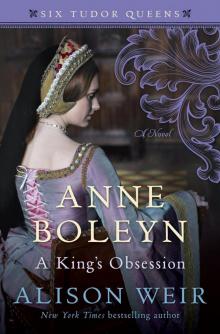 Anne Boleyn: A King's Obsession
Anne Boleyn: A King's Obsession Traitors of the Tower
Traitors of the Tower Mistress of the Monarchy: The Life of Katherine Swynford, Duchess of Lancaster
Mistress of the Monarchy: The Life of Katherine Swynford, Duchess of Lancaster Queens of the Conquest: England’s Medieval Queens
Queens of the Conquest: England’s Medieval Queens Eleanor of Aquitaine: A Life
Eleanor of Aquitaine: A Life Mary, Queen of Scots, and the Murder of Lord Darnley
Mary, Queen of Scots, and the Murder of Lord Darnley Henry VIII: The King and His Court
Henry VIII: The King and His Court Queen Isabella: Treachery, Adultery, and Murder in Medieval England
Queen Isabella: Treachery, Adultery, and Murder in Medieval England Katheryn Howard, the Scandalous Queen
Katheryn Howard, the Scandalous Queen Arthur- Prince of the Roses
Arthur- Prince of the Roses The Wars of the Roses
The Wars of the Roses Eleanor of Aquitaine: By the Wrath of God, Queen of England
Eleanor of Aquitaine: By the Wrath of God, Queen of England Mary Boleyn: The Great and Infamous Whore
Mary Boleyn: The Great and Infamous Whore Jane Seymour: The Haunted Queen
Jane Seymour: The Haunted Queen Anna of Kleve, the Princess in the Portrait
Anna of Kleve, the Princess in the Portrait Lancaster and York: The Wars of the Roses
Lancaster and York: The Wars of the Roses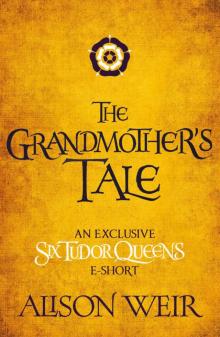 The Grandmother's Tale
The Grandmother's Tale The Princess of Scotland (Six Tudor Queens #5.5)
The Princess of Scotland (Six Tudor Queens #5.5) The Lady Elizabeth
The Lady Elizabeth Katherine Swynford: The Story of John of Gaunt and His Scandalous Duchess
Katherine Swynford: The Story of John of Gaunt and His Scandalous Duchess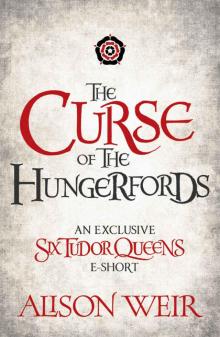 The Curse of the Hungerfords
The Curse of the Hungerfords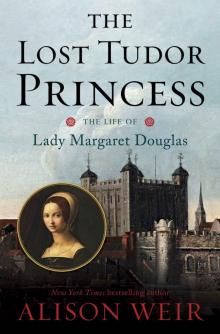 The Lost Tudor Princess: The Life of Lady Margaret Douglas
The Lost Tudor Princess: The Life of Lady Margaret Douglas Eleanor of Aquitaine
Eleanor of Aquitaine Mistress of the Monarchy
Mistress of the Monarchy The Lost Tudor Princess
The Lost Tudor Princess Henry VIII
Henry VIII Anne Boleyn, a King's Obsession
Anne Boleyn, a King's Obsession A Dangerous Inheritance: A Novel of Tudor Rivals and the Secret of the Tower
A Dangerous Inheritance: A Novel of Tudor Rivals and the Secret of the Tower Elizabeth of York
Elizabeth of York Katherine of Aragon, the True Queen
Katherine of Aragon, the True Queen Katherine Swynford
Katherine Swynford Wars of the Roses
Wars of the Roses Queens of the Conquest
Queens of the Conquest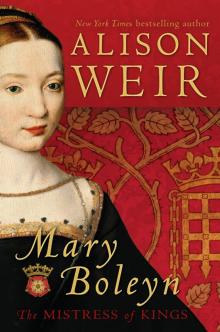 Mary Boleyn
Mary Boleyn Britain's Royal Families
Britain's Royal Families The Tower Is Full of Ghosts Today
The Tower Is Full of Ghosts Today Life of Elizabeth I
Life of Elizabeth I Anne Boleyn A King's Obssession
Anne Boleyn A King's Obssession Lancaster and York
Lancaster and York Jane Seymour, the Haunted Queen
Jane Seymour, the Haunted Queen Queen Isabella
Queen Isabella The princes in the tower
The princes in the tower